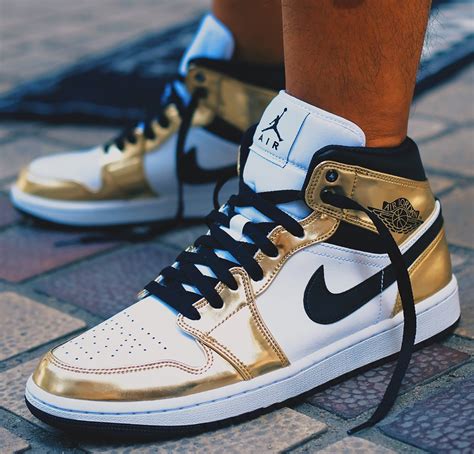ir j.m hermes | Mid ir j.m hermes Mid-infrared (MIR) imaging has emerged as a valuable tool to investigate biological samples, such as tissue histological sections and cell cultures, by providing non-destructive chemical specificity without recourse to labels.
SIA „Corporate Solutions” Reg. No. 40003861875 VAT payer’s reg. No. LV40003861875 Address: Pērnavas 43A-9, Rīga, LV-1009 AS SEB Bank Code: UNLALV2X
0 · Mid
Stage 23 GX world would also unlock lvl 40 gate. If the text says "Lvl 40 Gate Unlocks @Stage 30!" on the upper right portion of your screen/phone, you have to progress and accomplish your Stages individually. Completed all .
Mid-infrared (MIR) imaging has emerged as a valuable tool to investigate biological samples, such as tissue histological sections and cell cultures, by providing non-destructive .Journal of Optics. TOPICAL REVIEW • OPEN ACCESS. Mid-IR hyperspectral imaging for label-free histopathology and cytology. To cite this article: M Hermes et al 2018 J. Opt. 20 023002. .Mid-infrared (MIR) imaging has emerged as a valuable tool to investigate biological samples, such as tissue histological sections and cell cultures, by providing non-destructive chemical .
Mid-infrared (MIR) imaging has emerged as a valuable tool to investigate biological samples, such as tissue histological sections and cell cultures, by providing non-destructive chemical specificity without recourse to labels.
Journal of Optics. TOPICAL REVIEW • OPEN ACCESS. Mid-IR hyperspectral imaging for label-free histopathology and cytology. To cite this article: M Hermes et al 2018 J. Opt. 20 023002. View the article online for updates and enhancements. This content was downloaded from IP address 130.226.56.2 on 28/02/2018 at 16:42.Mid-infrared (MIR) imaging has emerged as a valuable tool to investigate biological samples, such as tissue histological sections and cell cultures, by providing non-destructive chemical specificity without recourse to labels. Mid-infrared (MIR) imaging has emerged as a valuable tool to investigate biological samples, such as tissue histological sections and cell cultures, by providing non-destructive chemical.
Imaging biological samples using resonant absorption in the MIR region is a particularly challenging task compared to imaging in the visible range of the electromagnetic spectrum. Here, we define the MIR region in terms of wavelengths ranging between 2 and 12 mm (in wavenumbers, 5000 to 800 cm−1).Abstract. In this Letter, hyperspectral imaging in the mid-IR spectral region is demonstrated based on nonlinear frequency upconversion and subsequent imaging using a standard Si-based CCD camera. A series of upconverted images are acquired with different phase match conditions for the nonlinear frequency conversion process. Mie scattering effects create serious problems for the interpretation of Fourier‐transform infrared spectroscopy spectra of single cells and tissues. During recent years, different techniques were proposed to retrieve pure absorbance spectra from spectra with . A simple, optimized and relatively cost-effective system operating in near and mid-infrared ranges and combining OCT and co-registered IR spectroscopy is exhibited and the potential of the multimodal system for non-destructive .
This approach is generic in nature and constitutes a major simplification in realizing video-frame-rate mid-IR monochro-matic imaging. A second part of this paper includes a proof-of-principle study on esophageal tissues samples, from a tissue microarray, in the 3 –4 m wavelength range.
Mid

As technology allows for imaging at ever more extreme wavelengths, the interest in hyperspectral imaging at those wavelengths grows. chemical changes such as polymerization, the oxygenation of haemoglobin or general cell health. Mid-infrared (MIR) imaging has emerged as a valuable tool to investigate biological samples, such as tissue histological sections and cell cultures, by providing non-destructive chemical specificity without recourse to labels.
hermes birkin crocodile chocolate
Journal of Optics. TOPICAL REVIEW • OPEN ACCESS. Mid-IR hyperspectral imaging for label-free histopathology and cytology. To cite this article: M Hermes et al 2018 J. Opt. 20 023002. View the article online for updates and enhancements. This content was downloaded from IP address 130.226.56.2 on 28/02/2018 at 16:42.Mid-infrared (MIR) imaging has emerged as a valuable tool to investigate biological samples, such as tissue histological sections and cell cultures, by providing non-destructive chemical specificity without recourse to labels. Mid-infrared (MIR) imaging has emerged as a valuable tool to investigate biological samples, such as tissue histological sections and cell cultures, by providing non-destructive chemical.
Imaging biological samples using resonant absorption in the MIR region is a particularly challenging task compared to imaging in the visible range of the electromagnetic spectrum. Here, we define the MIR region in terms of wavelengths ranging between 2 and 12 mm (in wavenumbers, 5000 to 800 cm−1).Abstract. In this Letter, hyperspectral imaging in the mid-IR spectral region is demonstrated based on nonlinear frequency upconversion and subsequent imaging using a standard Si-based CCD camera. A series of upconverted images are acquired with different phase match conditions for the nonlinear frequency conversion process. Mie scattering effects create serious problems for the interpretation of Fourier‐transform infrared spectroscopy spectra of single cells and tissues. During recent years, different techniques were proposed to retrieve pure absorbance spectra from spectra with .
A simple, optimized and relatively cost-effective system operating in near and mid-infrared ranges and combining OCT and co-registered IR spectroscopy is exhibited and the potential of the multimodal system for non-destructive .This approach is generic in nature and constitutes a major simplification in realizing video-frame-rate mid-IR monochro-matic imaging. A second part of this paper includes a proof-of-principle study on esophageal tissues samples, from a tissue microarray, in the 3 –4 m wavelength range.
prix sac hermes birkin croco
hermes crocodile birkin 90k
Contacts. lv en ru. LSEZ „Duna” Ltd. Atslēdznieku street 29 Liepāja, LV-3401, Latvia. Phone: + 371 63427227 Fax: +371 63423753 E-mail: infoduna.lv. Requisites: Liepaja port docks Nr. 62, 63 Reg. No. 42103000026 AS Swedbank, code HABALV22 Account EUR: LV16HABA0001408051645.
ir j.m hermes|Mid




























